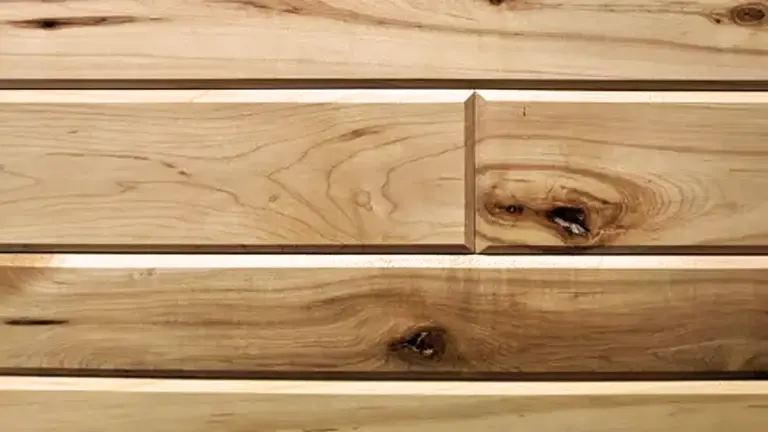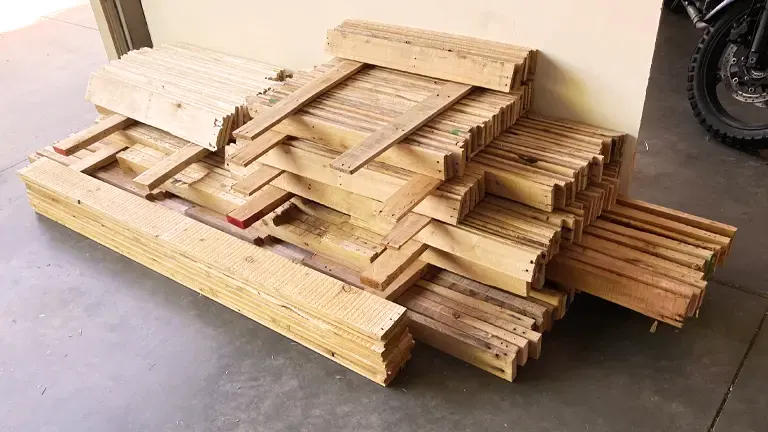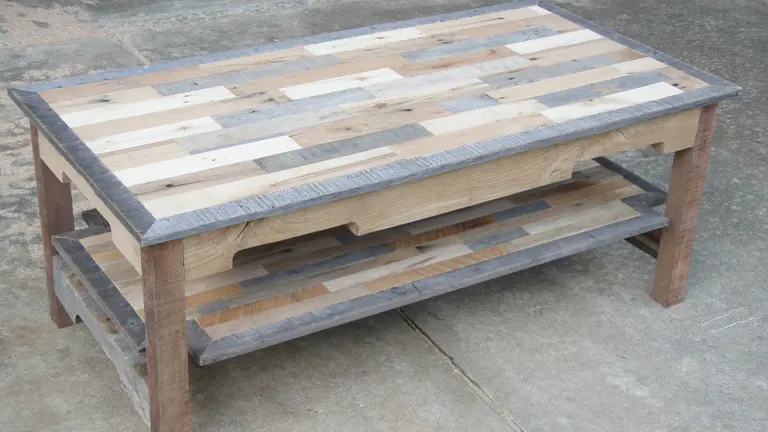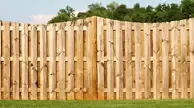Maple Pallet Lumber
- September 18, 2023
- 0 comment
Maple pallet lumber is renowned for its remarkable versatility and strength, making it an excellent choice for a wide range of applications. It is often used in the construction of pallets designed to transport heavy loads and endure the rigors of storage and transportation. Maple’s inherent durability ensures that these pallets can withstand the challenges of material handling in various industries. Beyond its industrial utility, maple pallet lumber’s aesthetic qualities also make it a favorite among woodworkers and craftsmen. Its tight grain pattern and light color contribute to a timeless and elegant appearance, making it suitable for fine woodworking projects. Whether it’s crafting furniture, cabinets, or decorative items, maple’s strength and visual appeal make it a versatile and reliable choice.
When it comes to selecting the right wood for your woodworking projects, the choice can be a pivotal one. One wood that often stands out for its versatility and durability is maple pallet lumber. This unassuming yet remarkable wood is favored by both industrial manufacturers and fine craftsmen alike, and it has a lot to offer. In this article, we will explore the unique qualities of maple pallet lumber, its various applications, and why it continues to be a top choice for wood enthusiasts.

| Specification | Description |
| Density | 670 kg/m³ |
| Moisture content | 12-15% |
| Wood Species | Hard Maple (Acer saccharum) and Soft Maple (various Acer species) |
| Surface Texture | Maple pallet lumber can have different surface textures, including rough-sawn, surfaced on one side (S1S), or surfaced on two sides (S2S). The choice of surface finish depends on the intended use and the level of finish required. |
| Treatment | Depending on the intended application, maple pallet lumber may be treated with preservatives to enhance its resistance to decay and insects. Treated lumber is commonly used for outdoor and industrial applications. |
| Sustainability Certifications | Many suppliers offer maple pallet lumber products that have been certified by organizations like the Forest Stewardship Council (FSC) or PEFC (Programmer for the Endorsement of Forest Certification), indicating responsible and sustainable sourcing practices. |
| Edge Profile | Maple pallet lumber can be obtained with different edge profiles, including square-edged and eased edges. The choice of edge profile is relevant for applications where safety and appearance are considerations. |
| Shrinkage | Maple pallet lumber can shrink and swell over time, especially when exposed to moisture. This is important to be aware of when planning your project. |
| Custom Cuts | Some suppliers offer custom-cutting services, allowing customers to order maple pallet lumber in specific dimensions or profiles tailored to their project requirements. |
| Availability | The availability of specific maple pallet lumber specifications may vary by region and supplier. When sourcing maple pallet lumber, it’s advisable to consult with local lumberyards or suppliers to determine the most suitable options for your project’s needs and specifications. |
The Beauty of Maple Pallet Lumber
Maple wood, known for its pale, creamy color, showcases a subtle grain pattern that adds an elegant touch to any project. Maple pallet lumber is no exception. Its uniform appearance and smooth texture make it an excellent choice for both rustic and modern designs.
One of the standout features of maple pallet lumber is its ability to take on different finishes beautifully. Whether you prefer a natural, clear finish that highlights the wood’s natural color or a darker stain that enhances its grain, maple pallet lumber readily adapts to your creative vision. This versatility in finishing options allows you to use it in a wide range of applications, from furniture making to cabinetry and flooring.

Durability and Strength
Maple pallet lumber is not just about aesthetics; it’s also prized for its durability and strength. It is one of the hardest domestic hardwoods available, making it highly resistant to wear and tear. This durability is a crucial factor in its suitability for pallets, where the wood must withstand heavy loads and rough handling. When repurposed, this same durability ensures that maple pallet lumber can serve you well in various projects for years to come.
Versatile Applications
Maple pallet lumber’s versatility extends far beyond its initial purpose as pallet material. Woodworkers and DIY enthusiasts can employ this lumber in a wide range of projects, both functional and decorative.
Ease of Workability
Maple pallet lumber is a joy to work with due to its relatively straight grain and fine texture. It cuts, sands, and planes smoothly, making it ideal for detailed woodworking projects. Whether you’re creating intricate carvings or crafting custom joinery, maple pallet lumber’s workability simplifies the process and ensures a professional finish.

Finishing Excellence
Maple’s close grain and fine texture allow it to accept stains, paints, and finishes exceptionally well. Whether you’re aiming for a clear, natural look or a vibrant, colored finish, maple pallet lumber delivers outstanding results. The wood’s ability to take on various finishes allows you to achieve the exact aesthetic you desire for your projects.

Resistance to Wear
Maple’s inherent hardness contributes to its resistance to wear and damage. When used in high-traffic areas or for furniture that sees frequent use, such as dining tables and chairs, maple pallet lumber stands the test of time. Its durability ensures that your DIY creations remain in excellent condition for years.
Cost-Efficiency
While hardwoods like cherry and walnut can be quite expensive, maple pallet lumber offers an affordable alternative without compromising on quality. Choosing reclaimed or repurposed maple pallet lumber can be even more cost-effective, making it an excellent choice for budget-conscious DIYers.

Common Uses
Maple pallet lumber finds versatile applications across various industries. Commonly employed in the construction and logistics sectors, it serves as the primary material for crafting sturdy pallets that transport and store goods efficiently. In the realm of interior design and woodworking, maple pallet lumber takes on new life as it transforms into elegant furniture pieces, including tables, chairs, and cabinets. Its exceptional dimensional stability and resistance to wear make it an ideal choice for high-traffic areas and flooring projects, providing both durability and aesthetic appeal. Moreover, its fine grain and workability make it a favorite among craftsmen for intricate woodturning projects and detailed joinery. Whether in industrial logistics, interior design, or woodworking, maple pallet lumber demonstrates its adaptability and durability in diverse applications, showcasing its value and versatility.


Frequently Asked Questions (FAQs)
- Is maple pallet lumber sustainably sourced?
Yes, many maple pallets are crafted from sustainably sourced wood or repurposed lumber. By using reclaimed or responsibly harvested maple, you can minimize the environmental impact associated with woodworking and contribute to forest conservation efforts. - Can maple pallet lumber be used for outdoor projects?
While maple is durable, it is not naturally resistant to decay and moisture like cedar or teak. However, with proper sealing and finishing, maple pallet lumber can be used for outdoor projects like benches or tables. It’s crucial to maintain a protective finish to ensure longevity. - How does the hardness of maple compare to other hardwoods?
Maple is considered one of the hardest domestic hardwoods, ranking high on the Janka hardness scale. It is harder than oak and cherry but not as hard as woods like hickory or walnut. This hardness makes it suitable for applications where durability and wear resistance are essential. - Is it safe to use maple pallet lumber for cutting boards and kitchen utensils?
Yes, maple is safe for use in food-related projects. It is non-toxic and does not impart any undesirable flavors or odors to food. Many professional chefs and home cooks prefer maple cutting boards due to their durability and food safety. - Can I stain maple pallet lumber to achieve a darker color?
Yes, maple can be stained to achieve a darker color. However, it’s essential to note that maple’s tight grain may limit the depth of color penetration. To achieve the desired shade, test the stain on a small, inconspicuous area of the wood first and adjust as needed. Proper surface preparation, such as sanding and conditioning, is also crucial for achieving an even stain finish on maple.














Leave your comment